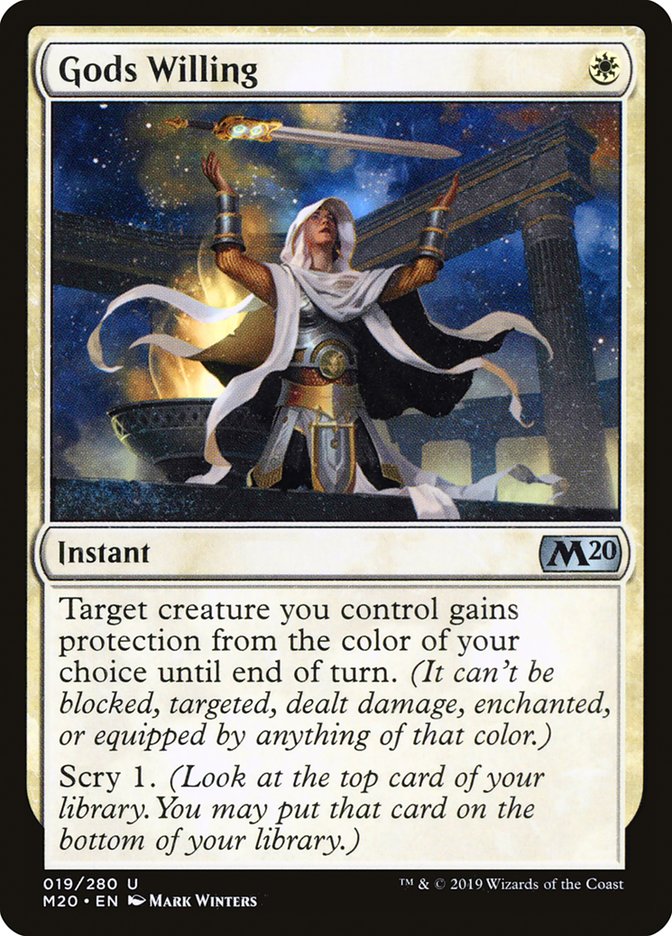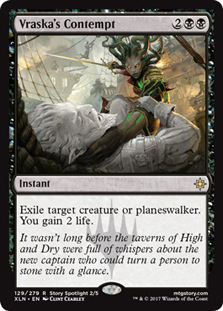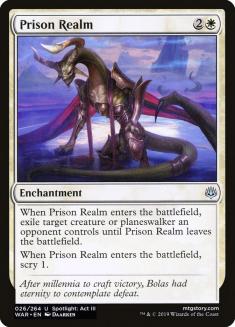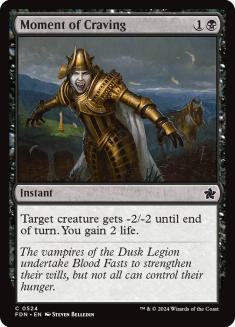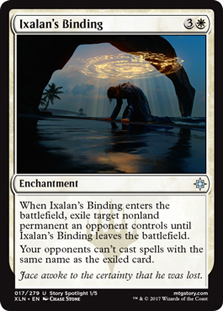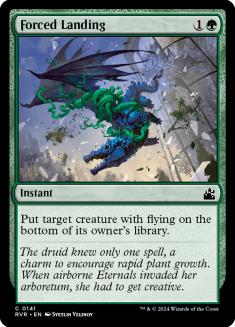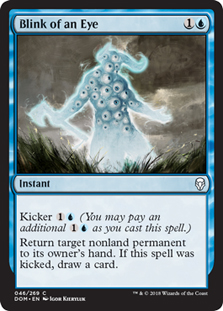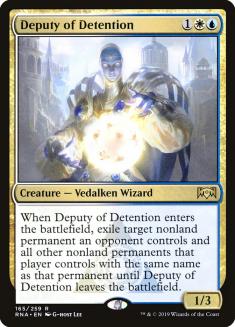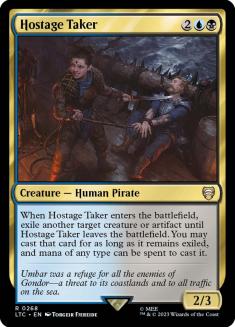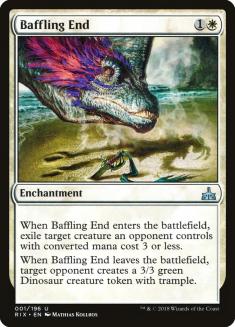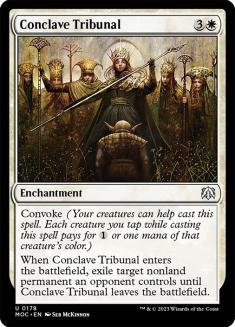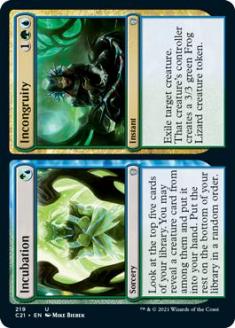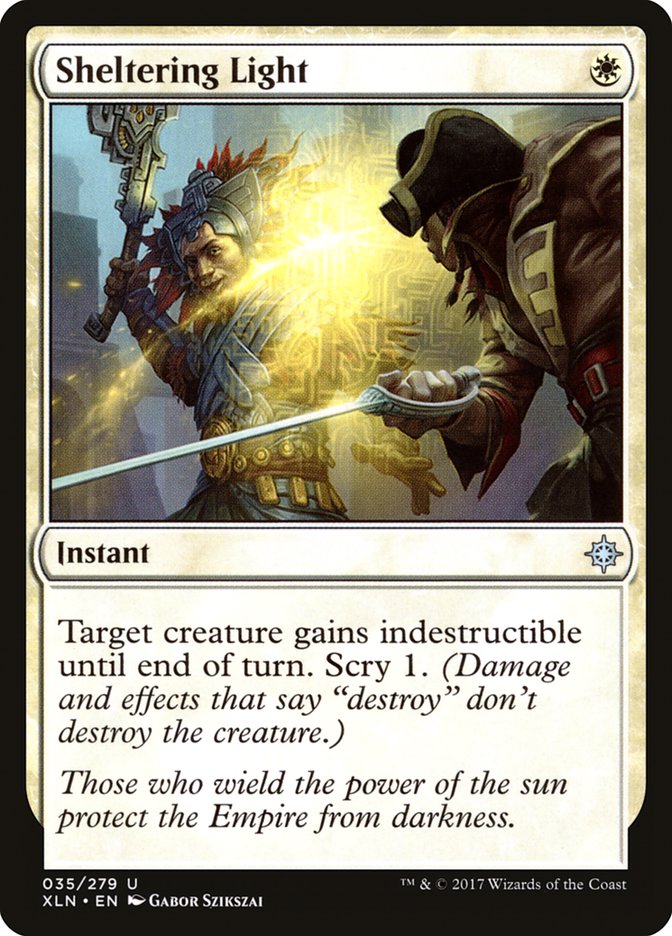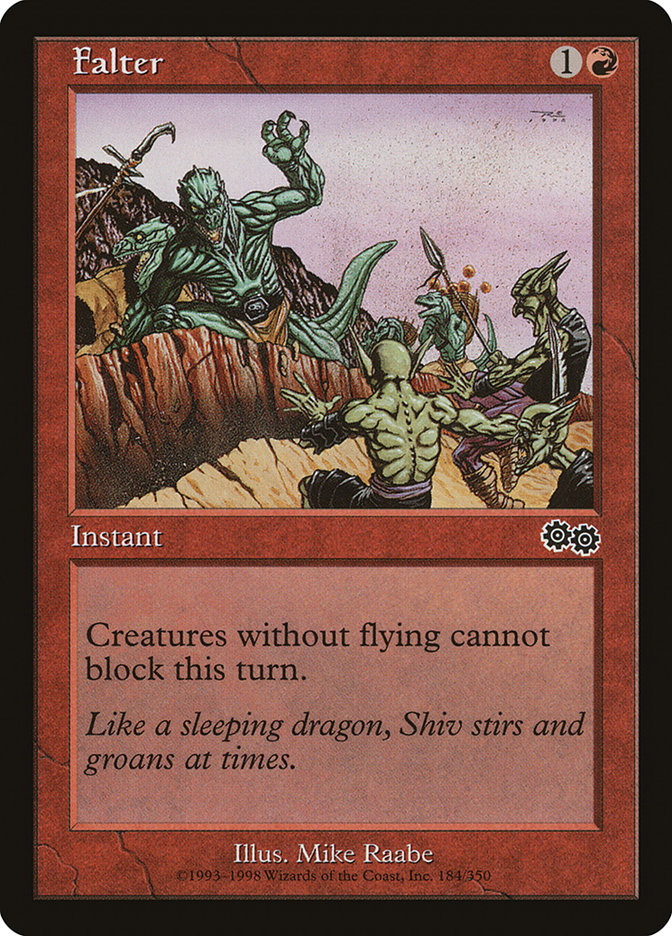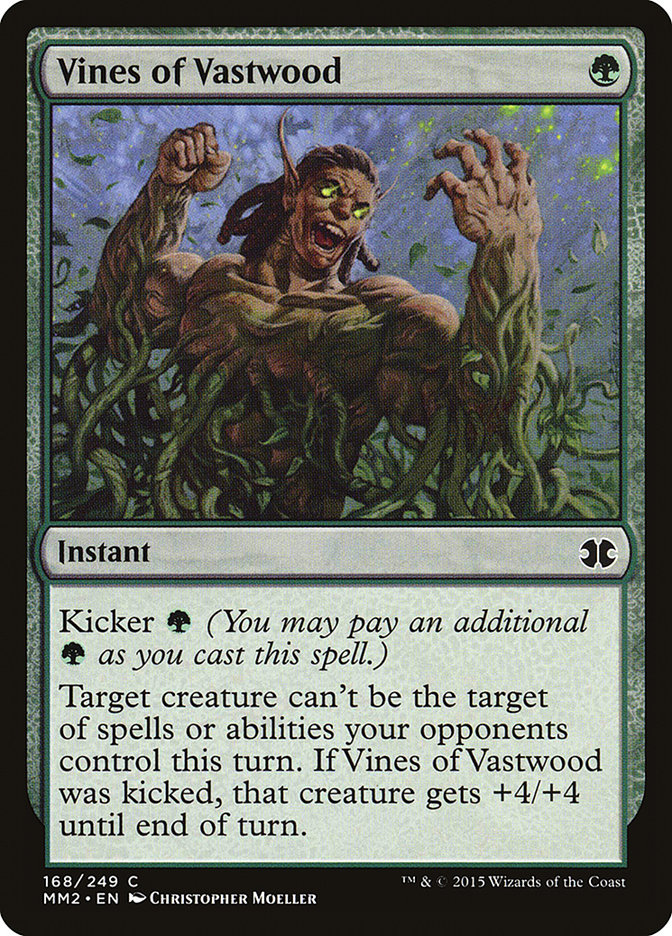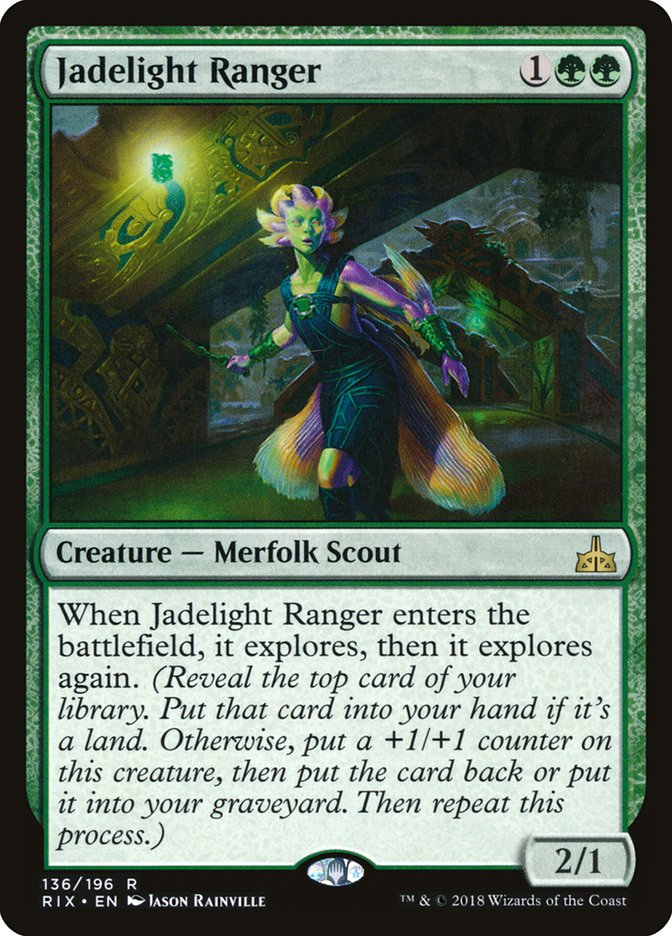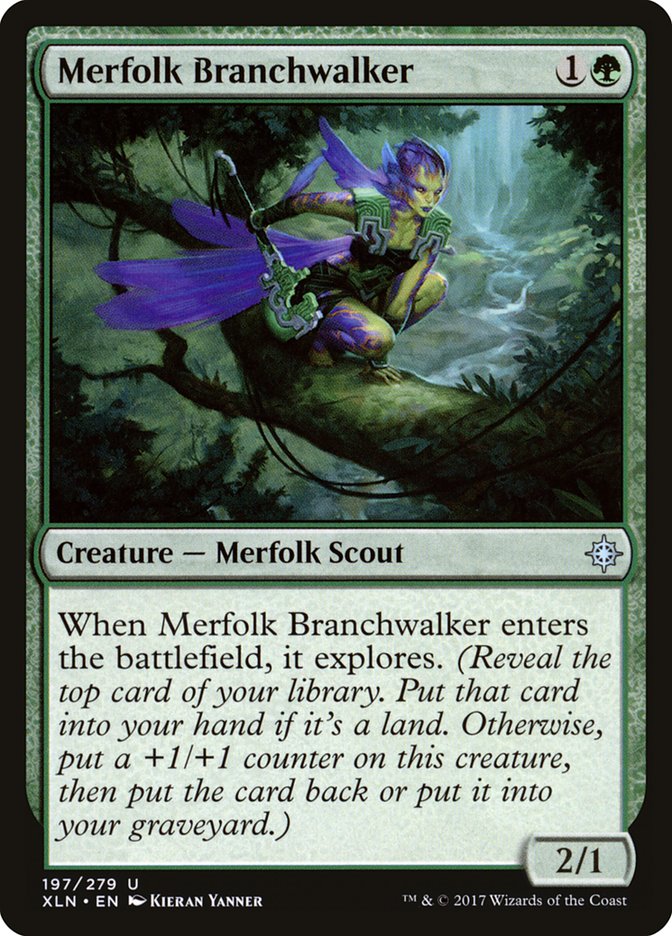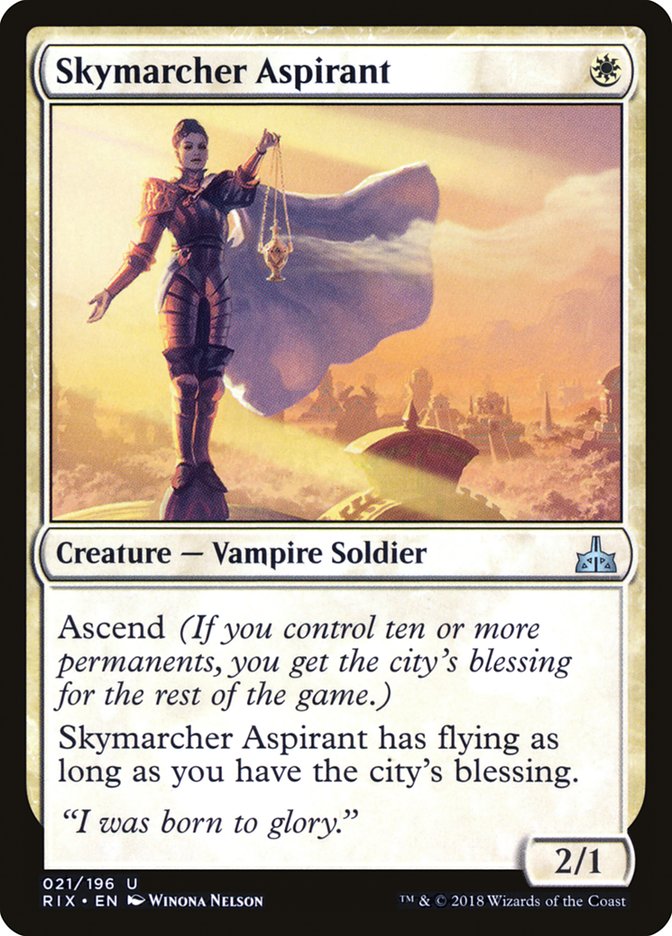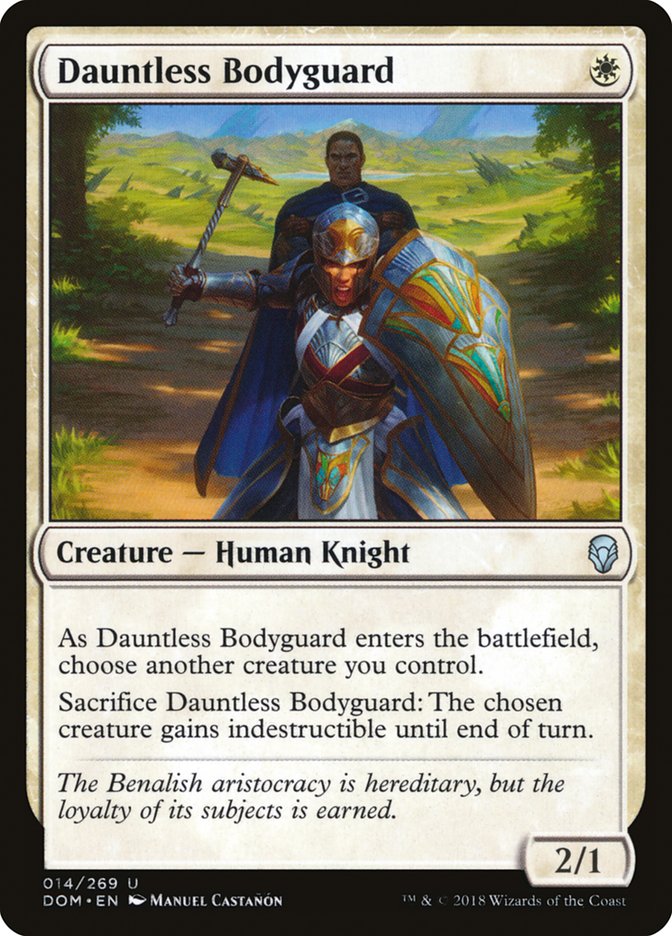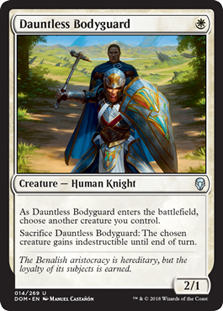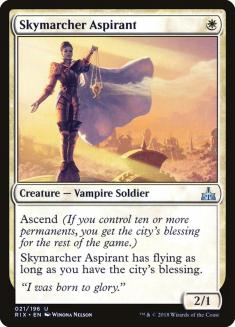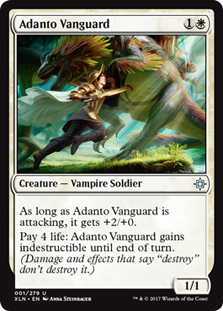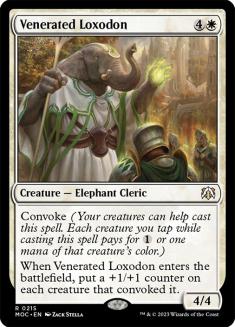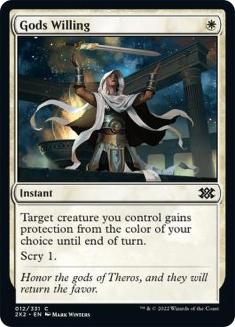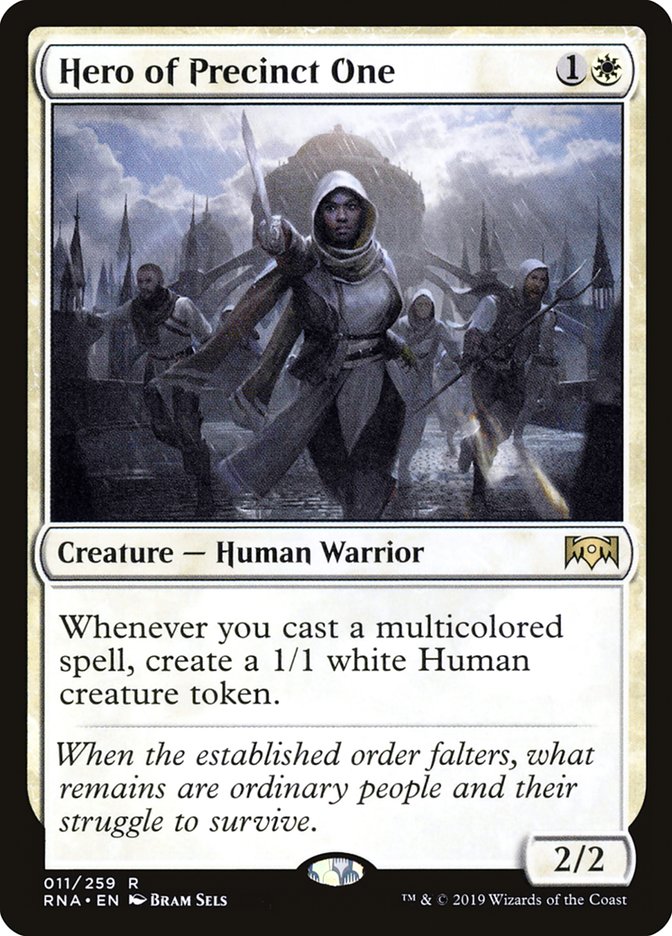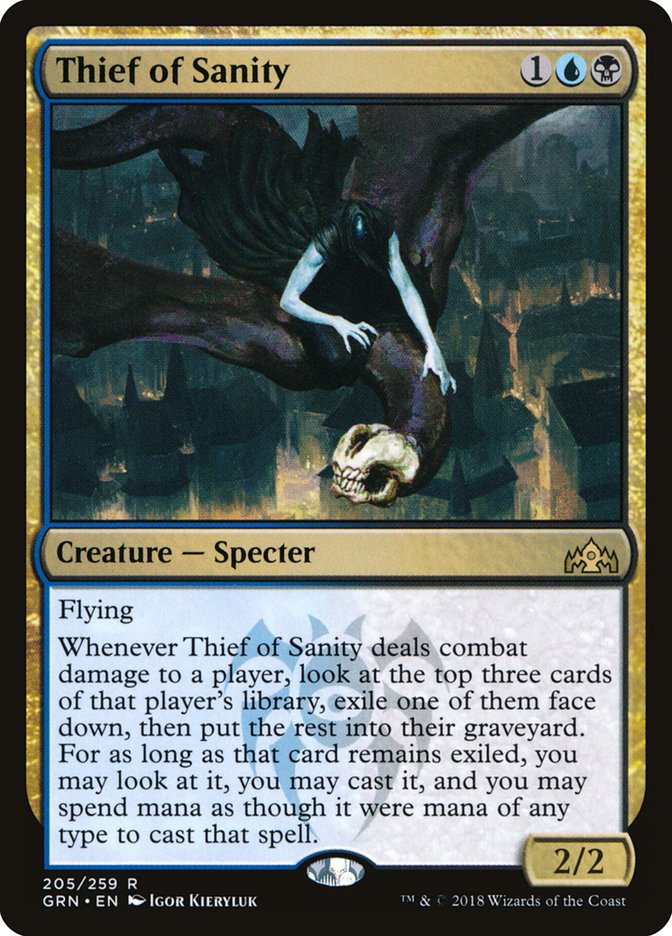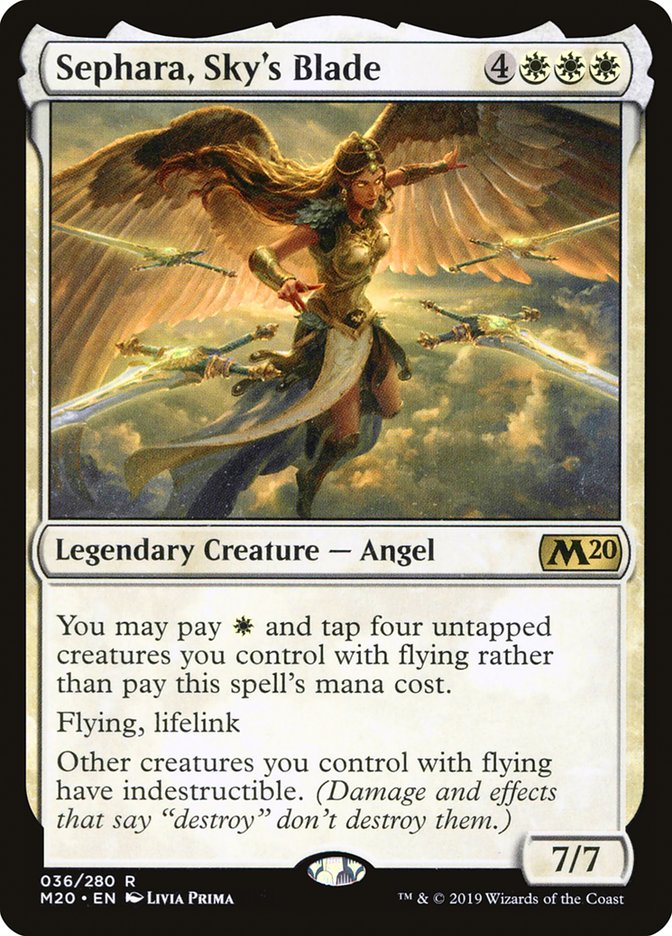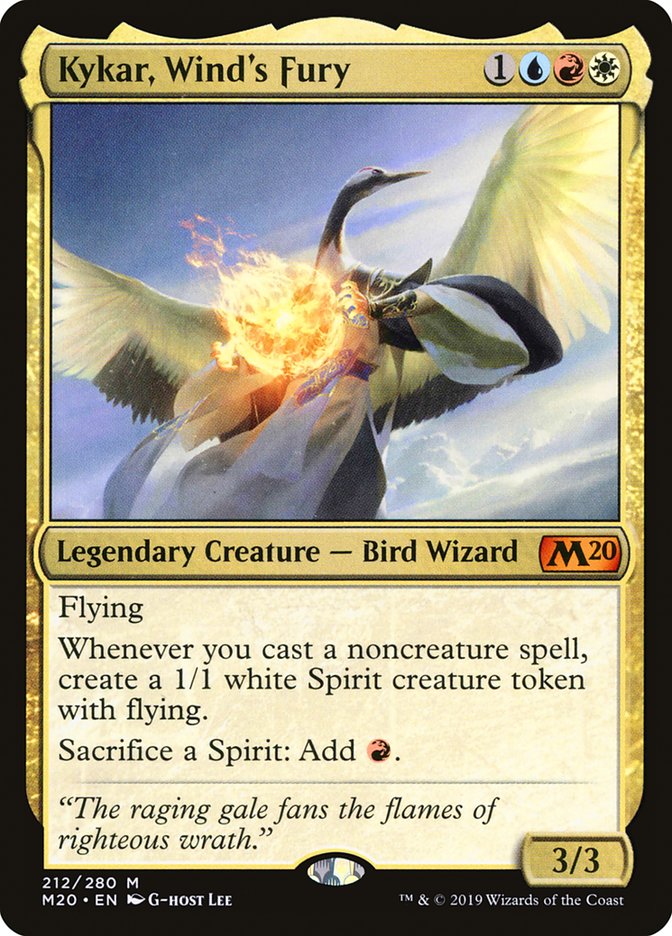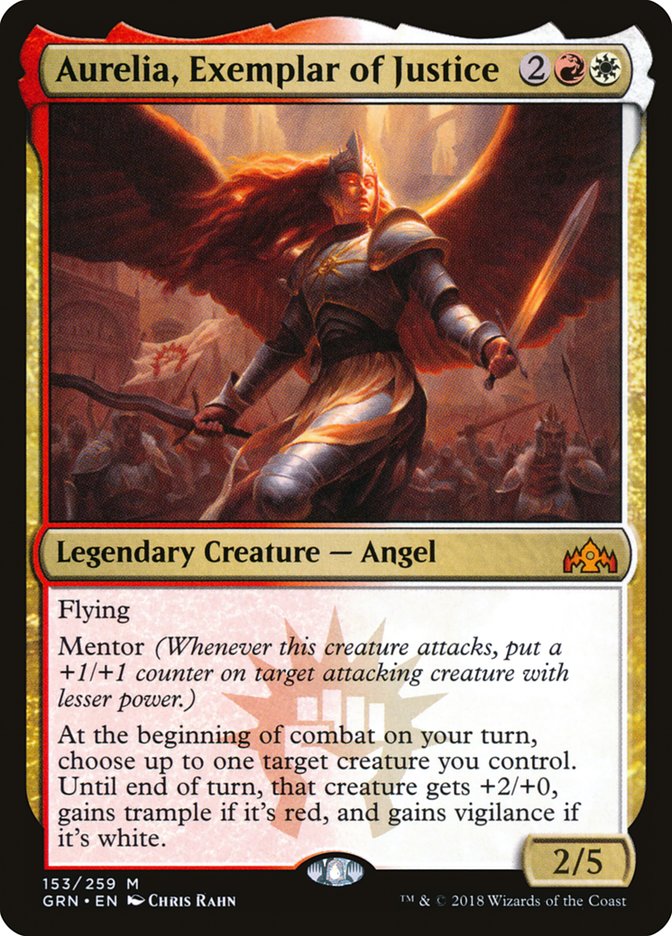Sometimes you find your article topic, and sometimes, it finds you.
That’s a whole article *right there*
— Cedric Phillips Seattle (@CedricAPhillips) June 25, 2019
For anyone who hasn’t seen it yet, Gods Willing was recently previewed in the upcoming Magic Core 2020 set.
For anyone who has ever seen the Boros or Jeskai Feather, the Redeemed decks in Standard, this kind of upgrade may seem subtle – but people who have played the deck know what an enormous upgrade this is for the deck.
Creatures (19)
- 4 Adanto Vanguard
- 4 Dreadhorde Arcanist
- 4 Tenth District Legionnaire
- 3 Krenko, Tin Street Kingpin
- 4 Feather, the Redeemed
Lands (21)
Spells (20)

Previously Boros Feather didn’t get to have that many dual lands, which made casting Feather – a WWR spell – a little unreliable, and even more difficult to cast Feather with a copy of Sheltering Light up.
What’s even more important than the upgrade to the deck’s mana is the shift from Sheltering Light to Gods Willing:
Creatures (19)
- 4 Adanto Vanguard
- 2 Legion Warboss
- 4 Dreadhorde Arcanist
- 4 Tenth District Legionnaire
- 1 Krenko, Tin Street Kingpin
- 4 Feather, the Redeemed
Lands (21)
Spells (20)

Gods Willing just does more than Sheltering Light.
Protection is worth so much more than Indestructible in most situations. In many situations they’re going to be nearly synonymous, but protection has more nuance in its lines of text and actual effect, which translates to more applications.
Against a majority of spot removal, giving protection is basically the same as protection, right? Wrong.
What about all these cards?
There are seriously a ton of cards in Standard that having the ability to give a creature protection from a color instead of Indestructible is a big upgrade.
Okay, full disclosure time. Sheltering Light is going to be better against exactly the card Kaya’s Wrath. Neat.
Getting back to how much of an upgrade Gods Willing provides to the archetype, Gods Willing also serves as a form of reach in the deck. Having a way to punch through a medium-sized Wildgrowth Walker and its green Merfolk counterparts is something that Sheltering Light couldn’t do before.
The reason that cards like Vines of Vastwood and Blossoming Defense are so popular in the Modern Infect deck is because they are both proactive and reactive. It’s a form of versatility that still plays to what the deck is already trying to do. Something like Sheltering Light is always just going to protect the creature that its targeting, not put the spell’s caster any closer to victory.
Similar to the way that Vines of Vastwood can function as a card that gets the opponent dead, Gods Willing can also be something that slams the door shut whenever the opponent plays in such a way that they’ll be exposed to a direct hit.
All of this is to say that on top of the additional protection that Gods Willing offers, the fact that it can also play a proactive role means that it is going to see play from the instant that it’s legal up until the moment it rotates.
Other Decks
Gods Willing is the type of card that is powerful enough to completely enable other archetypes by simply existing. Boros Feather isn’t the only deck that is interested in playing defensive creature-protection spells:
Spells (24)
- 4 Opt
- 1 Negate
- 3 Spell Pierce
- 1 Entrancing Melody
- 1 Chart a Course
- 4 Dive Down
- 4 Curious Obsession
- 4 Wizard's Retort
- 2 Essence Capture
Sideboard

So, what’s the best way to figure out if a deck wants something like Gods Willing or Dive Down? Generally speaking, it’s going to involve looking at the creatures and what they can do. Nobody wants to lose their creatures to removal spells, but only certain creatures are actually worth spending cards to protect them.
When considering protection spells in the context of a specific deck, try and look at three things:
- Does this creature need to stay on the battlefield to be worth a card?
- Is this creature easily replaced by any other creature?
- How disruptive is it to the curve of the deck to constantly hold up mana for the protection spell?
With something like the explore package in the Green midrange decks of Standard, protection spells aren’t valuable because the creatures are getting their value as soon as they enter the battlefield. This means that if a removal spell is spent on a Jadelight Ranger, the Ranger is still going to be worth the same number of cards had it survived.
These creatures are generally going to be played for the sake of bridging to the mid- and late-game. Their worth comes from generating value in the form of cards, not from working that hard to dominate the battlefield.
Mono-Blue Aggro is a deck that wants to try and protect a single creature and keep it on the battlefield because cards like Tempest Djinn and Curious Obsession reward their controllers for attacking multiple times, both through large amounts of damage and raw card advantage, respectively.
The not-technically-but-basically-Mono-White Aggro decks of the format lean into the consistency that comes from having a million cards that do almost the same thing. This means that something like Gods Willing isn’t going to have a ton of value because including Gods Willing in the deck is going to come at the cost of something like Dauntless Bodyguard.
If most of the creatures that Gods Willing would be protecting could just be replaced by more copies of the creature, it’s going to be better to lean into redundancy.
Think of it this way: if somebody is making the decision to play Mono-White Aggro, that person is effectively saying “I think that playing a bunch of little white creatures and attacking with them is a good thing to be doing right now.”
Taking that into account, which of these hands is the best at “playing a bunch of little white creatures and attacking with them?”
Sample Hand A:
Sample Hand B:
Obviously this question is a bit hyperbolic, but the fact is that outside of the card Benalish Marshal nothing in the deck is that important. The creatures are ultimately expendable and the goal is to overload the opponent’s removal, not try to weave through it.
Boros Feather is an archetype that wants something like Gods Willing because Feather and Dreadhorde Arcanist are incredibly unique and provide specific effects to a synergy-based aggro deck.
The Esper Hero decks in Standard are unlikely to want to play something like Gods Willing or Dive Down because they’re trying to spend all their mana every turn and play a more midrange-y game.
This means that holding up Gods Willing on turn three is going to come at the cost of not spending all the deck’s mana on turn three. Taking that further, this translates to not casting Teferi, Time Raveler or Narset, Parter of Veils until turn four. For a deck that simply wants to cast all its spells to try and win on the basis of overall card quality, losing a mana each turn is going to snowball in a pretty big way.
Modern Infect is able to get away with a bunch of Vines of Vastwood and Blossoming Defense because all of its spells cost one mana. This means that it’s playing a game that doesn’t scale with the turn counter.
Cards To Play With Gods Willing
Sephara is one of the cards that will be coming out with Gods Willing and checks a bunch of boxes. Most of the time that this card sees play, it’s going to be with a handful of small flying creatures. This is so she can be cheated onto the battlefield as early as the third turn.
The biggest problem with Sephara is that she suffers from the Doom Whisperer conundrum. Despite looking like a giant, scary, undercosted threat, the reason these kinds of cards are able to see print is because the format has enough answers to them that they aren’t completely busted. That’s where Gods Willing comes in.
Sephara is the payoff for playing a bunch of small, mana-efficient creatures and will lead to a non-traditional curve. Sephara is a card that is a specific payoff for playing a bunch of very similar cards, and her value is directly linked to how much damage she deals and how many creatures she protects while she’s on the battlefield. All those things combined are going to make Sephara and Gods Willing great friends throughout their time in Standard together.
Kykar is similar to Sephara in that it’s a payoff card for a deck that’s looking to be fairly redundant in the rest of what it’s doing. The key difference here is that Kykar is most interested in having its controller cast a flurry of cheap noncreature spells.
This means that Gods Willing already has upside with Kykar, and the fact that it already incentivizes playing a ton of cheaper spells is going to make the deck have a non-traditional curve. On top of all of that, Kykar being a creature that pays greater dividends the more spells that it sees (read: the longer it’s on the battlefield) is going to make it pair splendidly with Gods Willing.
At the beginning of Guilds of Ravnica Standard, there was a Boros Angels deck. It was effectively a Boros Midrange deck that leaned into the idea that the Angel package of Aurelia, Shalai, Voice of Plenty, Lyra Dawnbringer and Resplendent Angel was able to go over the top of most things while also staving off aggro decks.
Unfortunately Vivien Reid and Ravenous Chupacabra did a lot of work pushing the deck out of the format, and it died out from there.
Despite the deck having a more traditional curve, it does check the rest of the boxes for a deck that would be very interested in what Gods Willing has to offer. Investing a bunch of mana up front for something like Aurelia is a far less terrifying prospect when a single mana can ensure that she’ll be in play for a full turn cycle.
In a deck that has creatures as punishing as the Boros Aggro deck, this can be enough to give the deck what it was missing before: a way to actually snowball an initial advantage and kill the opponent while they’re trying to stabilize. It’s easier to keep pace with a creature-based midrange deck while taking a couple of points a turn, but you can only take eight damage so many times before it literally kills you.
There are always going to be scenarios that make Gods Willing look good, even in a control deck. That doesn’t mean it should go in every single deck that doesn’t want a creature to die. Look at how much a deck does or doesn’t have to warp in order to accommodate the play patterns that Gods Willing creates. Ultimately, the most important thing to be paying attention to when trying to include Gods Willing in a deck is how critical it is for one specific creature to stick around.
Follow the creatures that are payoff cards for the rest of the strategy and you’ll find easy homes for the best protection spell on the block.


